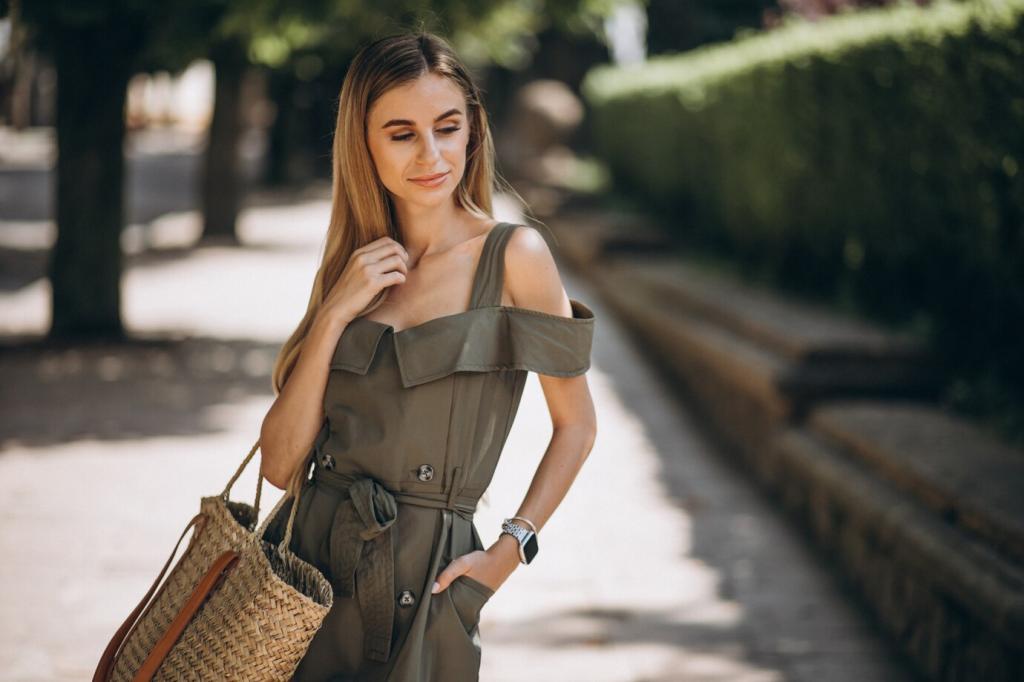
Eco-Friendly Fabric Innovations in Sustainable Fashion
The world of fashion is undergoing a transformation, driven by a new generation of eco-friendly fabric innovations. As environmental awareness rises, designers, brands, and consumers are seeking ways to minimize their impact on the planet. Sustainable fabrics have taken center stage in this shift, offering alternatives that conserve resources, reduce waste, and champion ethical production. These innovations not only enhance environmental responsibility but also create opportunities for unique textures, aesthetics, and performance characteristics in fashion. This page explores the most exciting advances in sustainable textiles and how they are reshaping the future of the industry.
Global Organic Textile Standard (GOTS) has become a benchmark for sustainability in cotton production. This certification assures consumers that the fabric is made according to strict ecological and labor criteria. Brands sourcing GOTS-certified cotton ensure that farms, processing facilities, and even the dyes used meet rigorous standards, safeguarding both workers and the environment. Ethical sourcing also translates into strong traceability, allowing shoppers to make informed, responsible choices.

Grazing Management and Soil Restoration
Regenerative wool farming relies on intentional grazing schedules designed to revitalize the land. Rotational and managed grazing allow grasses to recover, stimulate diverse plant growth, and rebuild topsoil. This method counters problems like overgrazing and erosion, common in conventional sheep farming. As the soil regenerates, it locks away more carbon and retains water more efficiently, directly combating the causes of climate change from the ground up.
Animal Welfare and Ethical Shearing
Animal welfare sits at the heart of regenerative wool innovation. Rigorous standards are established to ensure sheep are treated humanely, with practices such as pain-free shearing, sufficient space, and access to clean water and natural pastures. This not only secures wool quality but also aligns brands with the ethical values of today’s consumers, who increasingly demand transparency and kindness in animal-derived products.
Carbon Sequestration and Climate Impact
One of the standout features of regenerative wool is its potential to actively pull carbon from the atmosphere. Healthy, managed rangeland acts as a significant carbon sink, offsetting emissions from livestock and textile processing. As brands invest in verified regenerative wool sources, they also participate in climate progress, helping fashion become part of the solution rather than the problem. Storytelling around climate-smart textiles adds distinctive value, strengthening consumer loyalty.

Previous slide
Next slide
Bioengineered and Lab-Grown Fabrics
Microbial Spinning: Fabrics Grown from Bacteria
Microbial spinning involves engineering bacteria to produce thread-like fibers, which are then spun into eco-friendly textiles. These fabrics can mimic silk, cotton, or entirely new textures, all without conventional agricultural input. The fermentation-based process typically runs on renewable feedstocks and closed-loop systems, drastically reducing waste, water, and chemical use. Brands adopting bacterial fabrics are at the forefront of sustainable luxury and innovation.
Yeast-Based Silk and Protein Fibers
Biotechnologists are now able to program yeast to express spider silk proteins, which can be harvested and spun into ultra-fine threads. These lab-grown silks match or outperform traditional silk in strength, elasticity, and biodegradability, with a fraction of the ecological footprint. Since no silkworms are required, yeast-based silks sidestep animal welfare issues while providing designers with versatile, high-performance materials.
Customizable Lab Grown Textiles
Lab-grown fabrics aren’t limited to imitating nature—they can be engineered to possess tailored properties. Producers can program for water repellency, extra strength, antimicrobial features, or even color, effectively reducing the need for post-production processing and chemical finishes. That means garments are not only greener to make but may also have a longer lifespan, further reducing environmental impact and meeting the demands of conscious consumers.
Mechanical and Chemical Textile Recycling
The next generation of closed-loop fabrics are made from fibers that have been mechanically or chemically recycled from old clothing, industrial scraps, or other waste. Mechanical recycling processes break down fabrics to their basic fibers, while chemical methods dissolve and reconstitute fibers at a molecular level. Both offer the promise of endless reuse, reducing demand for virgin resources and diverting waste from landfills.
Garments Designed for Disassembly
Circular design principles are shaping garments for easier recycling at end of life. Designers use single-material compositions or attach trims in ways that make disassembly straightforward. This ensures that when a garment is no longer wearable, its fibers can be recovered and returned to the production system with minimal loss of quality. Forward-thinking brands are investing in take-back programs to capture these valuable materials.
Fiber-to-Fiber Regeneration Initiatives
Innovations in fiber regeneration go beyond traditional recycling by restoring fibers to nearly original quality. Processes like lyocell and emerging enzymatic treatments transform pre- and post-consumer waste into new, high-grade materials. Fiber-to-fiber regeneration reduces dependency on fresh raw materials, helping large fashion players build supply chains that are truly circular and reduce their overall environmental impact.
Previous slide
Next slide

Consumer Education and Transparency
Technological advancements now allow brands to provide transparent journeys for their fabrics, from farm to finished garment. QR codes and blockchain technology offer consumers detailed information on sourcing, processing, and environmental impact. Engaging storytelling enhances these efforts, helping customers connect emotionally with the garments they buy and deepening loyalty to sustainable fashion.
